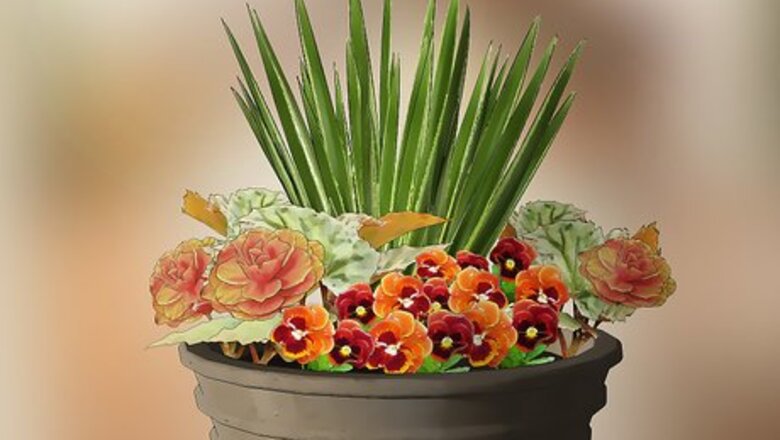
views
Selecting Plants for Fall Container Gardens
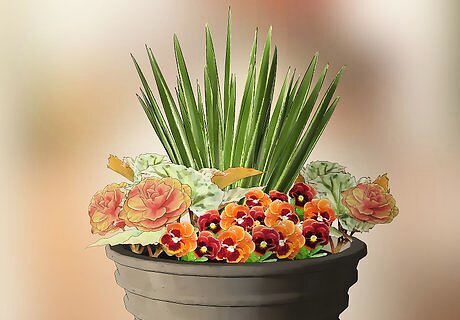
Choose plants that can handle cold temperatures. When you are planting a fall container garden, it is important to choose plants that can survive cold temperatures, including frost. Take into consideration the climate in your region, and choose plants that can survive well into the winter months. Here are a few plants to consider when designing a fall container garden. New Zealand flax. Begonias . Pansies. Heuchera. Evergreens. Chrysanthemum Ornamental grasses, such as carex.
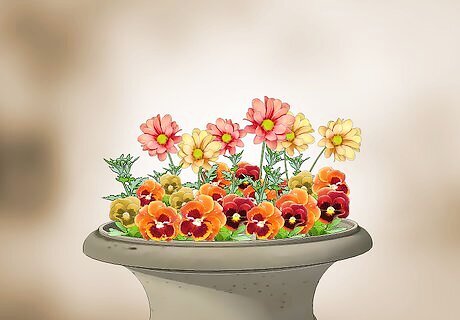
Select plants that bloom in the fall. If you would like your container garden to have a pop of color, then you should select plants that bloom and flower in the fall. These plants can continue to flower with less light as the days get shorter. In the late fall and early winter months many plants will lose their leaves and color. The landscape can begin to look grey and drab. As a result, you can add color to your yard through the use of autumn container gardens. The following plants will provide flowers well into the fall and come in a variety of colors: Chrysanthemums. Pansies. Ornamental kale.
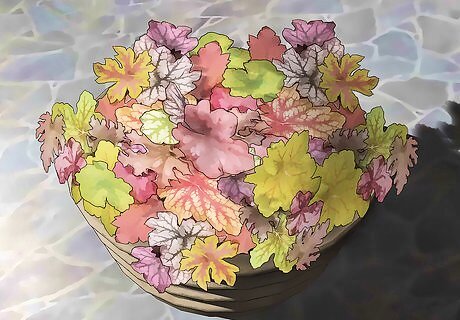
Consider plants with colorful foliage. When designing an autumn container garden, you can also add color using foliage. For instance, many non-flowering plant varieties will produce colorful leaves during the fall. These are excellent for autumn containers because they are often hardier plants that can survive the cold weather and also add texture and color to your garden. For example, heuchera has colorful fall foliage and works well in fall container gardens. Similarly, ornamental grasses in the autumn months can have an orange or purple hue to them that work well in container gardens. Avoid planting sweet potato vines or coleus. Despite the fact that they are an excellent color, they will not be able to survive the cold fall climate.
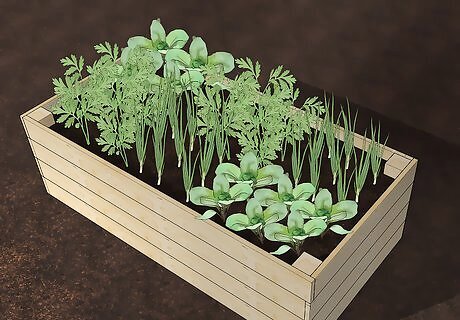
Try planting vegetables. You can also try planting some hearty vegetables in the fall. Many gardeners lament the fact that they can no longer grow flowers or vegetables in the colder seasons. This is not necessarily true. There are a variety of vegetable plants that can continue to thrive even after the first frost. If you are interested in growing a fall vegetable container garden, consider these plants: Garlic: Can continue to grow throughout the winter and even survive during frosty weather conditions. Kale: Thrives in the fall and early winter months. Cannot survive the coldest winter climate, but will live through early winter. Turnips: Will continue to grow in a container garden through the winter as long as they are buried deep in the soil. Carrots: Will also grow during the winter as long as they are buried deep within a container for warmth.
Planting Autumn Container Gardens

Make sure plants are close together. In the spring and summer months you typically space plants further apart in container gardens because the plants will grow into each other as they mature. In the fall, however, place plants closer together in order to fill the container. These plants will likely stagnate and not grow much bigger. As a result, you should select plants that are already mature and place them close to each other to create a full and beautiful container garden.
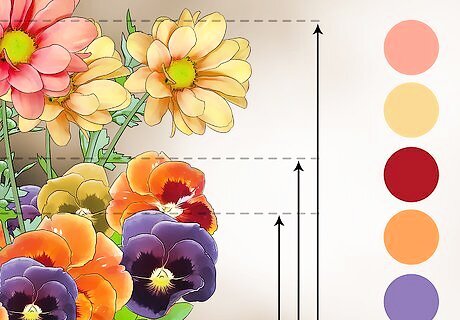
Include plants with complementary colors and heights. In order to design an appealing autumn container garden, you should take into consideration the color and size of the plants. Choose colors that complement each other. You should also select plants that are a variety of heights. For instance, you do not want to plant all low bedding with no taller plants to add variety. Instead, you should look to include ground cover, taller plants, and maybe even a few plants that will hang over the edges of the container. For example, you could plant red chrysanthemums with some yellow ornamental grasses and green and purple heuchera. This will cover different height levels and will give an excellent pop of color to your home in the autumn months.
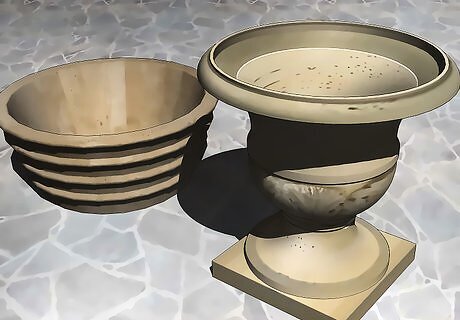
Use containers that won’t crack in freezing temperatures. It is also important to consider the type of container to use in the fall and winter months. Clay pots may crack and break in the colder weather. Instead, you should use fiberglass, iron, stone, or thick plaster containers that can stand up to the changing weather conditions. Many of these options are extremely heavy and may be difficult to move around. Try planting in a lightweight plastic container and then placing that inside your larger stone or iron containers. This will also make it easier for you to take out and switch plants between seasons.
Caring for Fall Container Gardens

Water less in the autumn. The cooler temperatures associated with the autumn months result in less plant growth. As a result, plants do not need to be watered as frequently in the fall as they do in the spring and summer. Check plants before watering them, to determine if they need water. Look at and touch the soil to see if it is dry. Typically dry soil is light in color. Water the entire root area until water begins to drain out the bottom of the pot. In the autumn you will likely only need to water your container garden one to two times per week.

Protect your plants from frost damage. Although it is important to select plants that can handle frost, you can also take some added steps to further protect your container garden from frost damage. There are a number of things that can be done to avoid frost damage in the fall. Try out these tips to ensure your container garden stays healthy: Place the container in a sheltered area: At night, if there is frost in the forecast, you should move your containers into a sheltered place. For example, move into the corner of the front porch so that it is protected from the wind. Bring containers inside at night. If there is a sustained cold period, you may want to bring the containers in at night. This will protect your plants from the elements. Raise containers off the ground. For example, you can purchase a container that has pot feet, or place the container on bricks. This will aid with drainage and can help prevent the pot from cracking in the cold weather. Use a layer of mulch, such as straw, leaves, or wood chips, to protect and insulate the soil. Place a sheet or fabric over the plants. If you are experiencing a cold snap, you can give your plants added protection by covering them with an old sheet or piece of fabric.
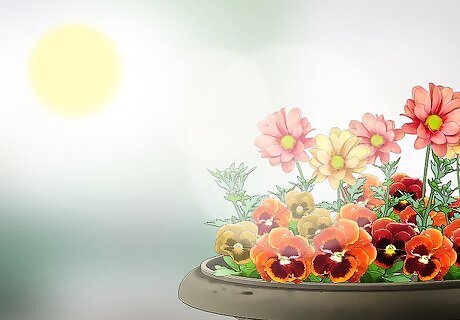
Position the containers in as much light as possible. You should situate container gardens in an area that gets as much sunlight as possible during the shortened fall days. This will help to keep your plants healthy and green for longer. Do not keep the planter under a covered porch and in the shade all day. This can increase the speed at which the plants become dormant.
Snip off dead leaves and flowers to keep your pots looking fresh. Check your container garden every few days for spent flowers and brown leaves and stems. Use a hand pruner to carefully cut them off, keeping your pots healthy and beautiful.
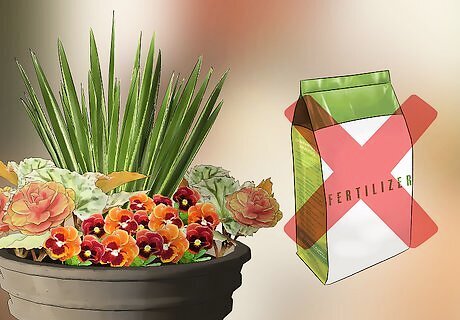
Do not use fertilizer in the autumn. Although fertilizer is recommended throughout the spring and summer months to help plant growth, it is less important in the autumn. Typically, controlled release fertilizers are impacted by the temperature and as a result not much fertilizer is released for plant use during colder temperatures. Because of this fertilizer is unnecessary. If you live in a milder climate you may find that fertilizer is necessary in the autumn. Use a water-soluble fertilizer in the autumn because it will be more effective.




















Comments
0 comment